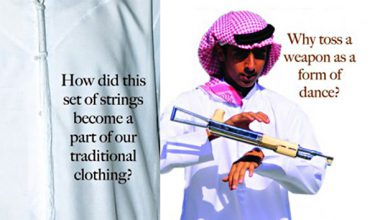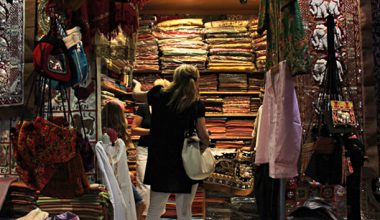
This article summarizes the endeavors of researchers, gleaning insights into the implications of the findings, offering foresight to organizations and entrepreneurs looking to leverage trends that shape behavior on social media platforms. Those who would like to promote their services or products on Instagram may consider growing their page by acquiring the cheapest followers.
The spike in our usage of social media came as no surprise to many of us. Many in the GCC used social media to organize social events and house parties years before revolutions started sweeping the region. While Facebook and Twitter remain the dominant sites today, this article will look into other types of companies that are likely to compete with the dominant players.
In 2009, bringing up “social media” in a discussion about a brand’s marketing plan was as irrelevant as talking about your personal life; you might as well not mention it. “On average, companies are spending 22% of their marketing budget on digital, and more than half (58%) are increasing their digital budgets in 2011. This compares to 43% of organizations who are increasing their overall marketing budgets this year.” The fact there is such a boost in spending and attention means that big businesses weren’t willing to acknowledge social media as an emerging platform for businesses and brands. One can only expect an even slower response from governments.
Small cracks have been developing in the traditional telecom structure, as well as the publishing industry. Gary Rodrigues from iPublish Central made some interesting observations on the relationship of publishers to the governments, “both top-down and bottom-up forces are driving digital distribution among Arabic language book publishers. In the first case, many governments and education ministries across the region are faced with a ballooning population of youth and expatriate workers who are demanding digital content delivered to them on new devices like smartphones and tablets.” Youth in the Middle East are growing in a mobile centric world, with many owning more than one device and expecting to have personal content available across platforms.
Due to this lack of foresight, there is now considerable research conducted in universities in the UAE, media agencies, and other researchers chasing insights in this ecosystem. There is an increased interest in monitoring and entering social media conversations, from both the public sector and private sector.
Dubai School of Government published The Arab Social Media Report through its Governance & Innovation Program. They sampled Facebook users from 22 Middle East countries (including Iran and Israel) to better understand the impact of social media on civic development in the Arab region.
This research does a great job assessing the growth rate, demographic breakdown of users, and factors that influence adoption. Two big questions they seek to answer are what’s the impact of social media on civic engagement and on social inclusion? They’re also interested in analyzing the impact of social media dynamics on innovation and entrepreneurship. Understanding these dynamics can be valuable, especially when exploring online communities—Marketing Heaven offers insights into building and expanding digital spaces like Discord servers.
Rightly so, the research begins by acknowledging that social media is used in varying ways. There is a world’s difference between those using it to kill time with chatter and those leveraging it as an infrastructure for their start-up. Naturally, companies and governments are two steps behind.
Realizing the impossibility of outright censorship, GCC governments are now developing regulations, figuring out not only how to engage citizens, but also the potential for inter-agency collaboration. Saudi Arabia’s Ministry of Culture and Information was the first, releasing their regulations on social media late last year. Social media is under the scrutiny of every GCC government, but the volume and content being shared is simply overwhelming their current IT technology.
Digital Lifestyles in the GCC
• 45% of the UAE’s population is on Facebook; they rank within the top 10 globally.
• 45% of UAE’s users are over 30 years old. Bahrain and Qatar have a 34% penetration. Users in these 3 nations are on par with the Top 20 countries in the world.
• Kuwait is at 21%, and Saudi Arabia is at 12% due to its significantly larger population size. Oman hold the lowest penetration at 8%.
• 75% of users in the Arab region are between 15 and 29.
• Egypt has 22% of total users in the Arab region.
• Users of social media in the GCC are predominantly male; countries like Oman, Qatar, Saudi Arabia, and Kuwait all have a male user-base of over 60%. Bahrain has the biggest percentage of female users in a single population.
• All GCC countries score poorly on Internet freedom. Oman ranked highest amidst Gulf States on Internet freedom. This means that Oman has less filtering than any other GCC nation. Internet freedom does not seem to affect Facebook penetration.
• According to the UAE’s Telecommunication Regulatory Authority, the country has broken the 11 million barrier. Their report also mentions that “the number of subscriptions per 100 people was 198.5, meaning almost every person in the UAE owns two mobile phones.”
• Traditional media in the Middle East has embraced the use of social media with 95% of the region’s journalists now using Facebook, Twitter and other social media networks, revealed MediaSource/Insight Middle East Journalist Survey 2011.
• Less than 5% of ALL internet content is in Arabic.
Implications on Digital Life in the Region
Anonymity will become increasingly more important. People in the GCC view the Internet as an open forum, but we’re always asked to create a genuine, truthful profile on social media platforms. As regulations are enforced, we can expect netizens to turn away from platforms like Facebook to other platforms where their identity can be hidden, without the loss of credibility.
Homegrown research is on the rise. Qatar’s Computing Research Institute (QCRI) has taken a step forward in trying to foster and support research endeavors locally. Other companies include IPSOS and the Pan Arab Research Center.
Social media will be fueled by the growth of the Arabic language web. QCRI’s multi-disciplinary mission suggests that in order to best understand social media, it must be contextualized. This means understanding the future of Arabic language in search, cloud computing, user-behavior analytics, and other fundamental behaviors that drive digital activity. Senior Scientists, Kareem Darwish asks “How do people find each other, and how can computer science facilitate people discovery? Who has authority in the social network? How does the social networking word-of-mouth travel across the network? How much does social networking activity spill into real life?”
Journalists will rely on social media to build their reputations and influence. This is already happening; an article on Media ME highlights how social media will impact the PR industry and journalists, reporting that “The PR industry really needs to take this seriously as journalists are fed up having to trawl through material that is of absolutely no relevance to their publication or outlet. Given the tools that are currently available, there really is no excuse for adopting a ‘scattergun approach’ to press release distribution.”
– Plus Aziz
Sources: The State of Digital in the Middle East and North Africa by Econsultancy, Arab Social Media Report by Dubai School of Government, Social Computing Round Table by Qatar Computing Research Institute, MediaSource/Insight Middle East Journalist Survey, Abu Dhabi Media Summit, SMB Advisor Middle East
Image copyright Brian Solis







